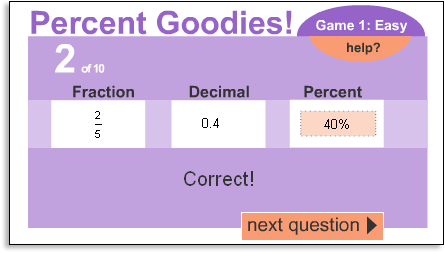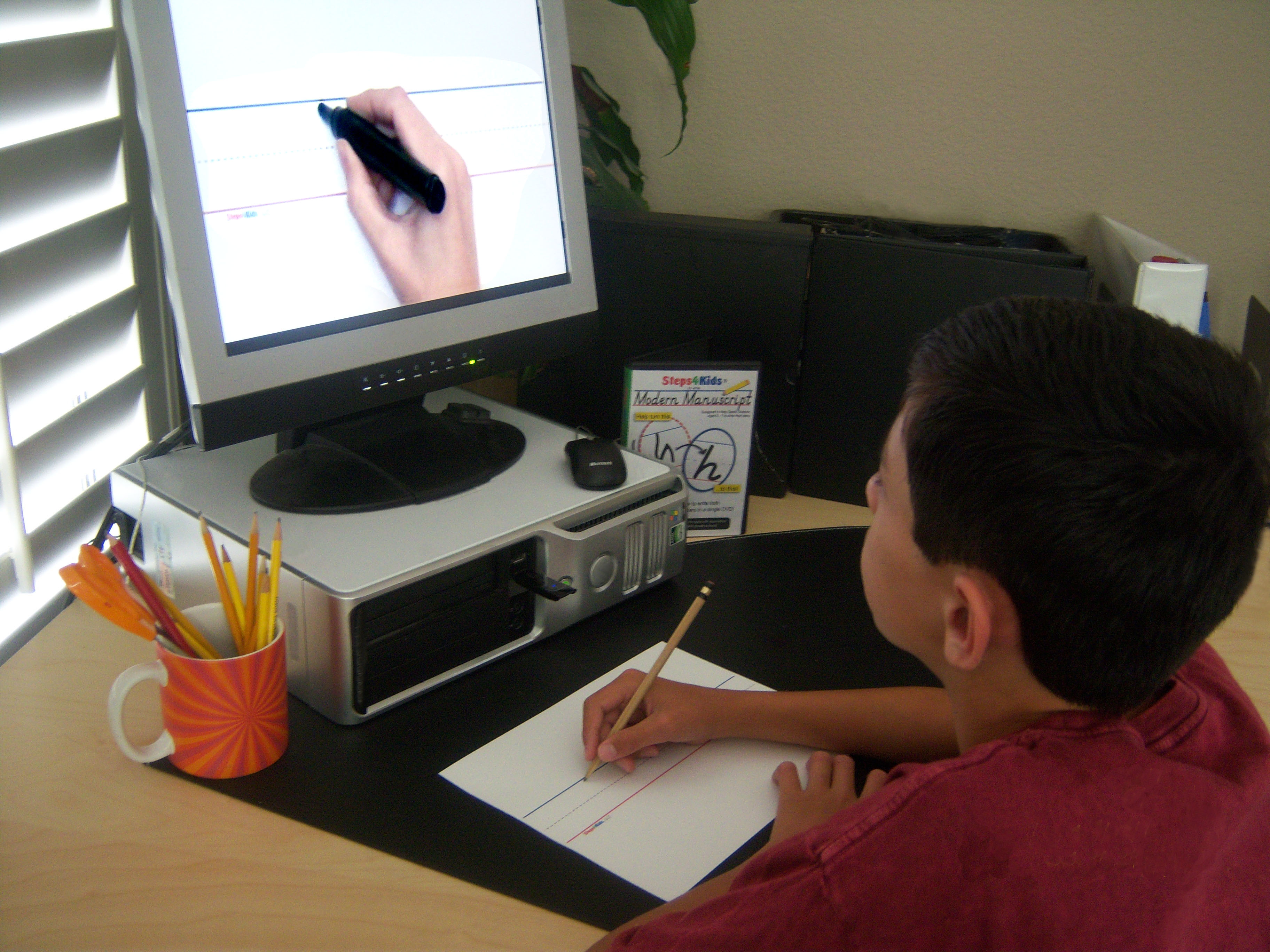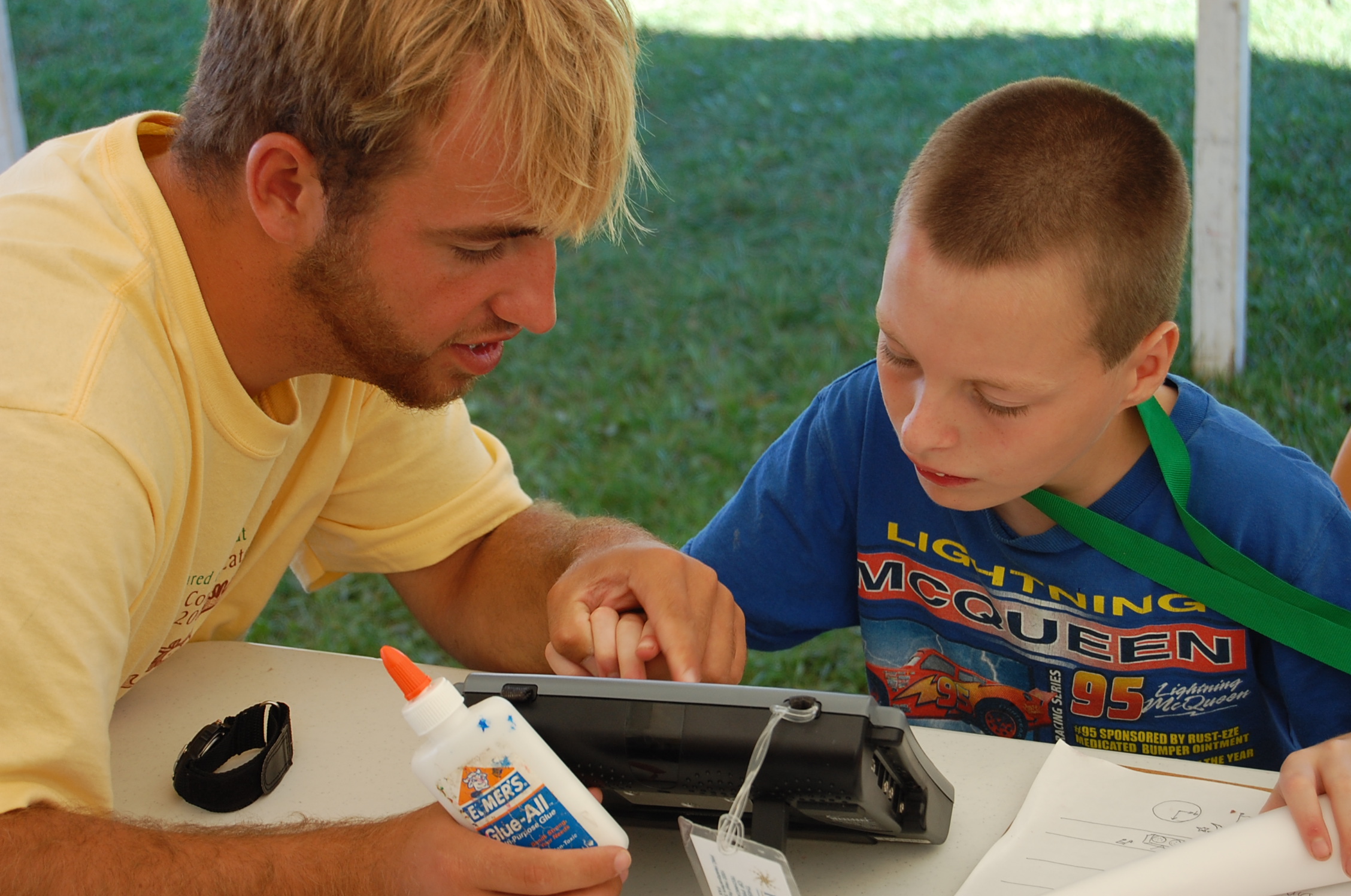In my last blog post, I discussed some low-tech and mid-tech assistive technology (AT) devices that parents and educators could consider to use to help their struggling student complete math assignments. I have mentioned before how much I LOVE the idea of using assistive technology in the classroom that can also be accessed at home to reinforce the knowledge that the students have learned in class that day. A lot of the assistive technology applications that I have been sharing with you have been applications for the iPad. However, since many students and many teachers, like myself, do not have access to an iPad at home, I am going to share with you a very useful resource that you
can access through a computer! In this blog post, I am going to be talking about an application called Mrs. Glosser's Math Goodies! Mrs. Glosser's Math Goodies is an all around exceptional resource for both teachers AND students! Why, you ask? Because Mrs. Glosser's Math Goodies provides meaningful, interactive math lessons for the teacher to use to help his or her students learn AND provides the student's with interactive games and crossword puzzles to reinforce the knowledge they learned in class along with homework help!!!
The
purpose of this blog is to share with you my experiences in using
Mrs. Glosser's Math Goodies and let you know some more information about this fabulous resource to possibly entice you to use it either at home with your child or in your classroom!

My experience using Math Goodies was very pleasant! The structure of the website and clear, understandable headings, make this site very easy to navigate! One of the best features of Math Goodies, is that it allows you to identify yourself as either a teacher, student or parent. By clicking one of the three options, the Math Goodies web site takes you to a page of things that you may be interested in looking at, according to what you picked! Math Goodies is a math teacher's dream! I could not believe all of the free resources that this website provided! Math Goodies provides a teacher with lessons, worksheets and WebQuests that they could use in their classroom! I also could not believe that all of the lessons that Math Goodies offers are already aligned to meet common core standards! Since the common core standards are so new, this was definitely a plus! This site is a MUST-VIEW!
Breakdown of Mrs. Glosser's Math Goodies:
Title: Mrs. Glosser's Math Goodies.
Cost: There are many things on Mrs. Glosser's Math Goodies website that are free.
THE FREE FEATURES:
- There are many free lessons, webquests and worksheets that a teacher could benefit from using. Mrs. Glosser's Math Goodies also provides free homework help for any student on the website! For students who want some fun reinforcement of the skills that they learned in class, Mrs. Glosser's Math Goodies also has some free crossword puzzles that the students can enjoy playing, and learning from!
However, to have unlimited access of everything that Mrs. Glosser's Math Goodies website has to offer, you would need to purchase her CD.
 THE "COSTLY" FEATURES:
THE "COSTLY" FEATURES:
- The price range of the CD depends on how many students you're buying the CD for. The price range starts at up to 50 students for $250, to up to 4,000 students for $1,000.
System Requirements: Mrs. Glosser's Math Goodies games, crossword puzzles and CDs work on all Windows and Macintosh computers. However, the computers need Acrobat Reader and Adobe Flash Player in order for the games and CDs to play!
Purpose/ Goals: The purpose of Mrs. Glosser's Math Goodies is to help teachers, parents and students when it comes to math. By providing lessons, worksheets, Webquests, games, homework help and crossword puzzles, Mrs. Glosser's Math Goodies hopes to help any teacher who is struggling with teaching his or her students math, and any student who is struggling in math!
Structure: The Mrs. Glosser's Math Goodies website is structured in the following way: lessons, worksheets, WebQuests, games, homework, articles, forums, glossary, puzzles, newsletters and standards. At the bottom of the website Mrs. Glosser's Math Goodies offers you the choice of clicking whether you are a student, teacher or parent!
Special Features: There were two particular things about Mrs. Glosser's Math Goodies that really impressed me and made the website stand out from other websites! Here's what stood out:
- The first was the math WebQuests! Why do I love these WebQuests? Not only are these WebQuests fun and engaging for the students, but the purpose of them is to make real world connections to math!!!
- I was also very impressed by the homework help forum! The homework help forum is a link on Mrs. Glosser's Math Goodies website where students can go and ask questions about their homework. Not only are the people who work on the website able to help these struggling students figure out their homework, but other students who click on the homework help forum are also able to answer other student's questions!!
Website Strengths: There were many strengths about Mrs. Glosser's Math Goodies website! Since this website prides itself on being a "math help portal", I feel that it really lives up to that title. Mrs. Glossers' Math Goodies website has the following strengths:
- A complete math curriculum, that is aligned to the new common core standards!
- Practice exercises for struggling students.
- Challenge exercises for advanced students.
- Interactive learning games, so the students can practice skills they learned in class.
- Crossword puzzles, to help the students learn math vocabulary.
- Homework help forums!
- Math WebQuests!
 |
| One of the Mrs. Glosser's Math Goodies games! |
Website Weaknesses: I am pleased to say that Mrs. Glosser's Math Goodies website did not have too many weaknesses. The weaknesses of Mrs. Glosser's Math Goodies website, that I noticed are:
- All the student-centered game and most of the puzzles are only available through purchase of the CD.
- A lot of the lessons and units seemed to be centered towards the older grades and there was not much available for the younger grades.
Mrs. Glosser's Math Goodies is a FANTASTIC resource to help either a teacher who is struggling to teach his or her students math, or a student who is struggling to learn math. With the help of Mrs. Glosser's Math Goodies lessons, games, worksheets, crossword puzzles, WebQuests and homework help forum, I truly believe that a student's math grades WILL improve!!




























